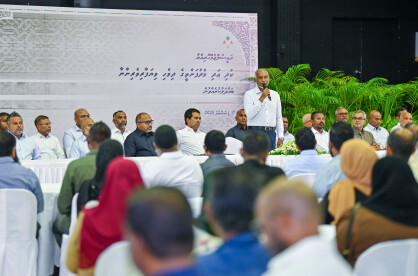A voting system is the way citizens elect their representatives. Different voting systems have a variety of different features, ranging from how proportional they are (whether seats in parliament reflect votes cast), the connection between Parliament Members and their constituencies and the extent to which voters can choose between different candidates.
Types of Voting Systems
The wide variety of voting systems int the world today can be broken down into two large families:
- Plurality/majority systems: These is the winner-takes-all system and includes common plurality systems like thesingle-winner and at-large districts, and less common majority systems like the two-round runoff or “jungle primary.”
- Proportional representation systems: These voting systems are designed to ensure that parties are represented proportionally (according to the share of the vote they win) in the legislature. These include party list systems, mixed-member proportional systems, and the single transferable vote.
The case of the Maldives
In the Maldives, Parliament and Council elections run under the first-past-the-post majority system. Voters vote for only one candidate. Alternatively, the President is elected by an absolute majority vote through a two-round system to serve a five-year term. While no presidential candidate has ever been able to secure a majority in the first round, multi-party coalitions have always been created to win the election. In the case of President Solih, a coalition was formed prior to the election. People have expressed discontent over this process, though no formal work has been done to initiate a change.
While speaking at the second meeting of the fourth session of ruling Maldivian Democratic Party's (MDP) National Council in February 2022, Speaker of Parliament and President of the MDP, Mohamed Nasheed, advocated for an amendment to the Constitution to allow the candidate who receives the most votes to be elected as president, with the stipulation that the candidate receives over 30 percent of the total votes. If no candidate succeeds in attaining the required percentage, he proposed continuing the existing practice under the two-round system (TRS) – that a second-round be held between the top two candidates.
Single-Member Plurality (SMP) Vs Two-Round System (TRS) - what are the distinctions?
- Single Member Plurality (SMP) electoral systems, sometimes referred to as first-past-the-post, are simple systems to administer. The candidate who wins more votes than any other candidate is declared the winner. Depending on the number of candidates and their relative popularity, the winning candidate may or may not need a majority of votes to win. While this is relatively simple, it does not always allow for a truly representative mandate, as the candidate could win despite securing less than half the votes in the election. Furthermore, smaller parties, or independents candidates have a lower chance of being elected under this system.
- The Two Round System (TRS), sometimes referred to as run-off or double-ballot system sees the top two candidates go through to a second round in the election and voters choosing their favorite among them. In the first round of election, voters mark their preferred candidate in the ballot. If a candidate wins the minimum percentage as prescribed by the country’s constitution, then the candidate gets elected to office. Otherwise, a second ballot is held, usually a few weeks apart. In most countries, just the top two candidates go through to the second round. The candidate who wins the most votes in the second ballot is declared the winner. Parties that get through to the second-round barter with those who did not, to solicit their official support for their candidate in the run-off. This can take power away from voters as parties may agree to stand down candidates in future elections, in exchange for support. While this is easy for voters to understand and is simple to count, the voting process is drawn out over a period of two or three weeks and possibly longer, and hence is more costly.
Presidential elections around the globe
1. India:
The winning candidate needs to secure a certain quota of votes, which is 50% of the valid votes polled plus 1 vote.
- The President is elected by members of an electoral college, composed of national and state lawmakers. They are the elected members of both Houses of Parliament (Lok Sabha and Rajya Sabha) and the elected members of the Legislative Assemblies of the States including the National Capital Territory of Delhi and the Union Territory of Puducherry.
- In general elections, each person casts one vote. However in the presidential election, each elector (MPs and MLAs in this case) indicates their choices in case of multiple candidates, in order of preference.
2. Turkey:
Presidential elections are conducted by universal suffrage and the candidate who receives the absolute majority of the valid votes is elected president.
- If absolute majority cannot be obtained in the first round, a second round is held on the second Sunday following the first ballot.
- The two candidates who received the highest number of votes in the first ballot contest in the second ballot, and the candidate who receives the majority of valid votes is elected president.
3. Philippines
On a single ballot paper, each voter must select one candidate for each of the national positions, and their choice of congressional representative, governor, mayor and councilors.
- Each voter is entitled to one vote each for the duration of the election. The voter may split his or her ticket.
- The candidate with the most votes wins the position; there is no run-off election, and the President and Vice President may come from different parties.
- In a time when two or more candidates emerge with an equal and highest number of votes, the tie breaker will be the Senate and the House of Representatives, voting separately.
4. The Gambia
The Gambia has a unique system of voting that does not involve the use of paper ballots in casting votes. Instead, it uses marbles.
- Voting with marbles was introduced in The Gambia by the British in 1965, when the country first obtained its independence, because of low literacy levels in the country at the time. The system has continued to be in use.
- The electoral system in The Gambia is based on first-past-the-post. There is no runoff and any party that manages to record the highest number of total votes cast, however small the margin may be, is declared winner.
5. France
The President is elected by direct universal suffrage where French voters go to the polls on two Sundays, two weeks apart. The candidate could win office in a single round of voting by scoring more than 50 percent of the vote on the first Sunday
- If no contender secures 50 percent, then voters return to the polls on the second Sunday after the first poll, to cast their votes
- Only the two candidates with the most votes qualify for the second round. The candidate with the absolute majority of votes cast is elected.
Traditionally, electoral systems have stood strong and have proven to be one of the most stable democratic institutions. While trivial tampering of rules and regulations related to administration of elections have been common, radical reforms have not started until the emergence of newer democracies. Therefore, whenever there are proposals for change, it is imperative that the key objectives of such narratives focus on fair representation of the geographic areas in countries, the number of seats a party wins being reflected in its vote share, and that voters be able to indicate both their preferred party and candidate. Ultimately, it is the citizens of a country who must have the final say.





